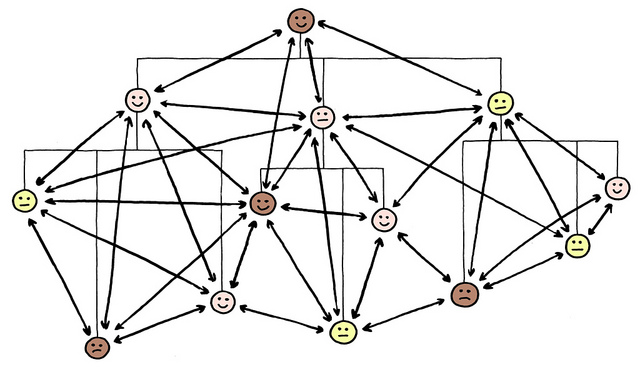5 February 2018 | Articles, Articles 2018, Communications | By Christophe Lachnitt
How To Structure A Communications Organization In The Digital Age?
There is probably no ideal blueprint since communications departments now operate in an extraordinarily fast-moving environment. But let’s give it a try.
To do so, we have to take into account both the content produced by communications departments nowadays and the channels they use to distribute said content to their target audiences.
Given the importance, long professed on this blog, of content in communications in the context of the digital, social and mobile age, it is imperative to keep that aspect at the forefront of our organizational thinking.
There are fundamentally two categories of content, both of which cover internal and external communications:
- Fast content (disposable): It can be proactive (press release, internal announcement…) or reactive (media news, trending topic on the social web…).
- Slow content (durable): It doesn’t relate to hot new items and therefore remains relevant for longer.
According to Forrester’s POEM model, media outlets fall into three categories1:
- Paid media (offline and online advertising, sponsored content, paid search…). They are intended to grow a company’s visibility and foster its outreach on owned and earned media. They ensure consistency in messaging and provide targeting capabilities that are increasingly accurate. But they are costly and not very credible.
- Owned media (websites and mobile applications, accounts on social networks, press releases and press kits, brochures and magazines, exhibitions and events, internal media outlets…). They are intended to bolster the brand power of a company and develop its relationships with its audiences. They ensure consistency in messaging and offer a reasonable cost. But they are considered less and less trustworthy by the general public.
- Earned media (favorable press coverage, positive mentions on the social web). They reflect the influence of a brand because they are created by its audiences (from journalists to customers to the general public). For that reason, they are the most credible and least expensive. But they ensure absolutely no consistency in messaging and are thus risky.
Last but not least, a company’s audiences no longer cluster in silos since they are all active on the social web.

(CC) Jurgen Appelo
In this context, the double distinction between fast and slow content on the one hand, and paid, owned and earned media on the other, is of decisive importance in terms of organization structure because it creates different operational logics and rhythms:
| Paid media | Owned media | Earned media | |
| Slow content | X | X | |
| Fast content | X |
As a result, communications organizations could operate in the frame of an integrated strategic planning addressing slow and fast content respectively:
- One section focused on the creation and distribution of slow content in paid and owned media.
- One section focused on the creation and distribution of fast content in earned media.
In this logic, the public relations department, that manages the company’s outreach to the media, should also be in charge of the brand’s presence on social networks. That may require, in some cases, that the digital skills of the head of said department be enhanced. In parallel, the content factory, digital (excluding social networks), advertising and event teams could be regrouped or have their activities coordinated in terms of planning and delivery.
As for internal communications, I consider that its main synergies are with the team in charge of media relations and social networks. There are two reasons for that. First, the media relations and social networks team manages the content that is most important to employees. Second, and more importantly, employees are nowadays their employer’s first ambassadors on the social web. However, I am still inclined, at this stage, to keep internal communications separate from media relations in the communications organization since employees must be treated with the utmost consideration.
—
1 This model was originally created for external media but I have added internal media to it since they now operate in similar ways due to the effects of the digital, social and mobile revolution.


